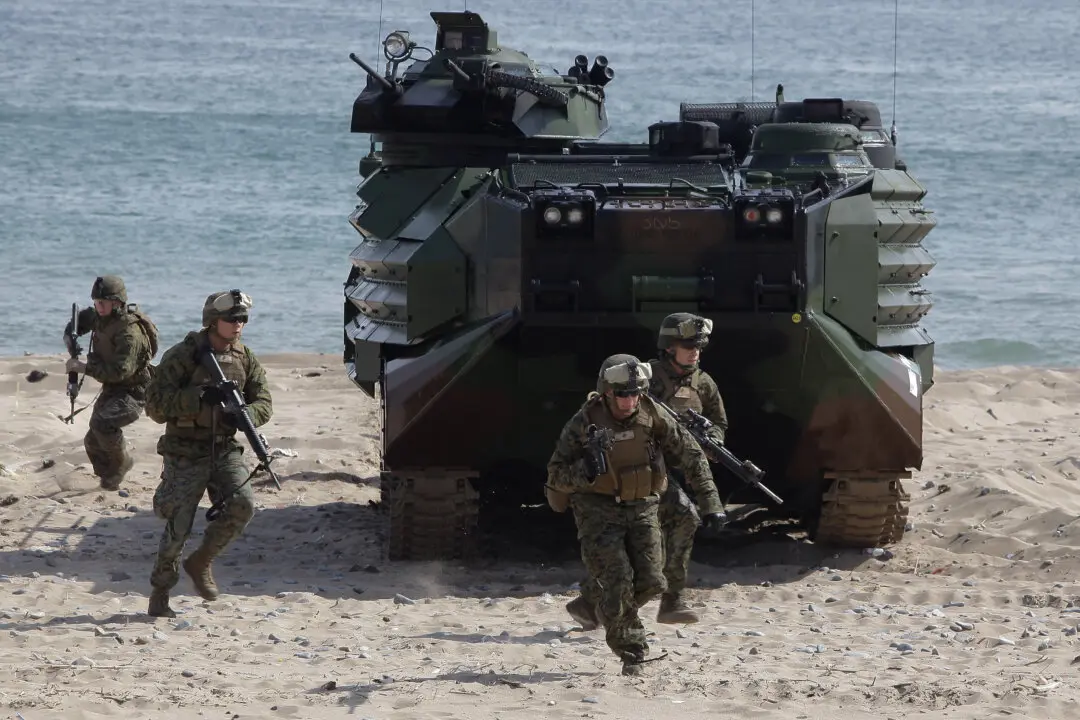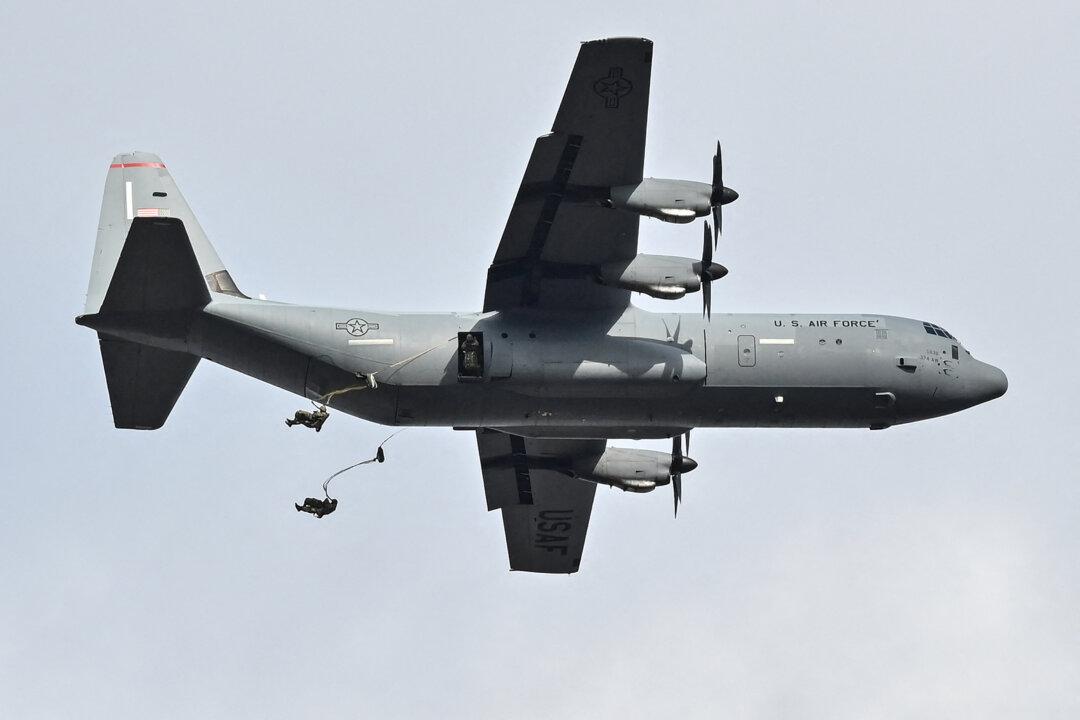Commentary
The U.S. Marine Corps has been developing solutions to the China problem. Numbers will favor the People’s Republic of China in any crisis that features extended naval warfare within a few hundred miles of China’s coast, hence the importance of the Corps’ Force Design (FD) effort to field forces relevant to such conflict and the urgency with which the U.S. Navy’s shipbuilding problem must be solved.
The Marine Corps is on the right track with FD. It is rapidly evolving its ability to operate
within the range of enemy weapons and to sustain its capability to engage enemy forces at close and extended ranges.
Akin to the Corps’ efforts in the 1930s, when it developed amphibious operations capabilities it foresaw would be essential in a war with Japan,
Force Design, initiated by former Commandant Gen. David H. Berger, in 2020, and accelerated by his successor, Gen. Eric M. Smith, will reduce its signature (physical and electromagnetic), improve its situational awareness, increase the range at which it can effectively hit targets with precision, expand its ability to share combat relevant information, lessen its logistical dependencies, and enhance its mobility and maneuverability.
But regardless of the Corps’ success in fielding unmanned systems, new communications networks, anti-ship and anti-air missiles, and high-resolution battlespace awareness, if its forces cannot get to the fight and move around the battlespace, Force Design may have limited utility in the Indo–Pacific.
Success depends on holding fast to at least 31 amphibious ships. This fleet would consist of 10 large-deck LHA/LHD vessels and 21 LPDs (13 are currently in the fleet, but more San Antonio-class ships will replace older Whidbey Island and Harpers Ferry-class LSDs being phased out of service).
Well into the 1990s, the Marine Corps had a requirement for 38 amphibious ships. As budget pressures mounted, the service accepted a “fiscally constrained” 34-ship objective for several years, after which the Corps and the Navy settled on
31 ships as the minimum acceptable number.
To this fleet of conventional amphibs, the Marine Corps wants to add up to
35 “
landing ship medium” vessels, the type of ship and its quantity arrived at by a host of studies, wargames, simulations, and exercises. The Navy is at odds with the Corps’ plans, suggesting only
18 in its most recent NAVPLAN, but the two services will resolve their differences.
During the 1990s, the Marines closely studied the implications of more contested and lethal littorals. They found that their set of amphibious warfare capabilities was becoming less relevant or even practical. Improved anti-ship missiles (and the systems to guide them with precision at increasing ranges) meant that large amphibious warships would have limited ability to get close enough to any shoreline to “land the landing force.” Yet these large ships remained essential to making transoceanic crossings and to provide an at-sea support capability. What was missing was a complementary ability to operate within archipelagic waters and the concepts and tools necessary to wage battle in such settings, whether from aboard ship or once placed ashore.
Concepts such as “
operational maneuver from the sea” and “
ship to objective maneuver” that had Marine Corps units launching forces from ships operating beyond the horizon—presumably beyond the range of anti-ship missiles of that day—directly to objectives deeper inland led to platform solutions that included the
LCAC, the
Expeditionary Fighting Vehicle (a flawed concept that was ultimately canned), and the
MV-22 Osprey (that repeatedly proved its worth during two decades of operations in Afghanistan). Each was deemed essential to get the force to the fight from a
supporting base of amphibious warships, an essential component of amphibious warfare, without which an amphibious force isn’t particularly “amphibious.”
The Corps has been criticized for retiring some equipment deemed less relevant to littoral warfare (such as tanks), but the thing that differentiates it from the Army (beyond service culture and its approach to combat), has been the service’s primary mission, codified in
law: to serve as an amphibious force able to conduct land operations in the prosecution of a naval campaign. Tools that aren’t critical to this mission sap limited resources, and a limited ability to operate “from the sea” undermines much of the justification to maintain the Corps. Though the Marines have made extraordinary strides in improving the service’s ability to operate on land in the modern era, its ultimate efficacy as an amphibious force lies in the hands of the U.S. Navy.
Here is where both services have a significant challenge: maintaining funding for the amphibious fleet desperately needed by the United States to defend its interests not just in the Indo-Pacific but also globally.
The unexpected loss of ships (e.g., the
USS Bonhomme Richard burning to its deck plates in 2020 and the early retirement of up to
14 littoral combat ships through 2027), maintenance challenges that accompany ships nearing the end of their service life (the 30-year-old
USS Boxer and the 35-year old USS
Wasp, both powered by steam plants), and the need to introduce new ships add to the costs buffeting the U.S. Navy. The Boxer was slated to deploy this past spring, only to be delayed by
maintenance problems. It finally sortied for a few days, then returned to port for rudder problems. If it does make it out to sea this summer, it will do so only to reenter maintenance on its return for perhaps two years. These woes have dramatically affected the ability of the Corps to do what only it can do: amphibious operations. In 2023, amphib ship readiness was an appalling
32 percent, down from 45 percent just one year earlier. In
testimony to Congress last year, Gen. Berger noted the importance of amphibs to the Corps’ reason-for-being and the problems that result when ships aren’t available; there have been occasions when the Marines could not respond to a COCOM request for support for lack of shipping.
The amphib component of the Navy’s fleet has to account for the realities of life in the littorals, through which most of the
world’s commerce travels. How big of a problem does the Navy face? Its annual shipbuilding account needs to be increased by
approximately 30 percent to achieve the fleet of 355 ships envisioned in the service’s most recent 30-year plan. Meanwhile, China’s navy has already surpassed 370 vessels, nearly all of which are kept close to home, while only 60 or so U.S. ships of the Navy’s
296 operate in the Pacific on any given day. Numbers really do matter.
Amphibious options are absolutely vital. The current budget preserves 31 amphibs, but as planners start on the next budget round, they must hold fast not only to that number, but also to new requirements driven by the changing landscape of war. If they do not, they face debilitating risks.
Views expressed in this article are opinions of the author and do not necessarily reflect the views of The Epoch Times.




